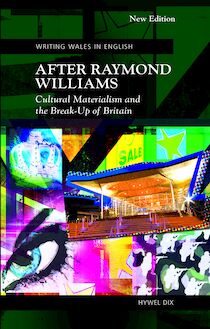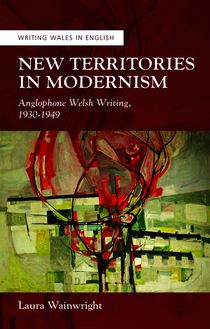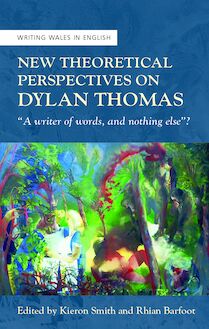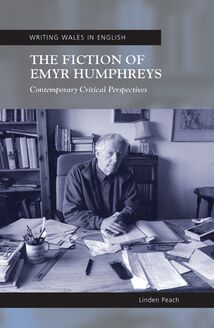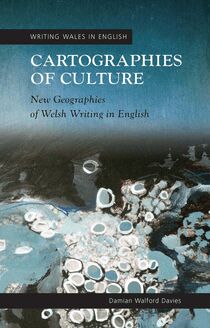-
 Univers
Univers
-
 Ebooks
Ebooks
-
 Livres audio
Livres audio
-
 Presse
Presse
-
 Podcasts
Podcasts
-
 BD
BD
-
 Documents
Documents
-
- Cours
- Révisions
- Ressources pédagogiques
- Sciences de l’éducation
- Manuels scolaires
- Langues
- Travaux de classe
- Annales de BEP
- Etudes supérieures
- Maternelle et primaire
- Fiches de lecture
- Orientation scolaire
- Méthodologie
- Corrigés de devoir
- Annales d’examens et concours
- Annales du bac
- Annales du brevet
- Rapports de stage
La lecture à portée de main
Vous pourrez modifier la taille du texte de cet ouvrage
Découvre YouScribe en t'inscrivant gratuitement
Je m'inscrisDécouvre YouScribe en t'inscrivant gratuitement
Je m'inscrisEn savoir plus
Vous pourrez modifier la taille du texte de cet ouvrage
En savoir plus

Description
Sujets
Informations
| Publié par | University of Wales Press |
| Date de parution | 15 février 2012 |
| Nombre de lectures | 0 |
| EAN13 | 9781783164974 |
| Langue | English |
Informations légales : prix de location à la page 0,0500€. Cette information est donnée uniquement à titre indicatif conformément à la législation en vigueur.
Extrait
Whose People?
Writing Wales in English
Detail from Gwlad Canaan / The Land of Canaan by Ap Dewi, 1900. By permission of Llyfrgell Genedlaethol Cymru / The National Library of Wales.
Whose People?
Wales, Israel, Palestine
Writing Wales in English
JASMINE DONAHAYE
Jasmine Donahaye, 2012
All rights reserved. No part of this book may be reproduced, stored in a retrieval system, or transmitted, in any form or by any means, electronic, mechanical, photocopying, recording or otherwise, without clearance from the University of Wales Press, 10 Columbus Walk, Brigantine Place, Cardiff, CF10 4UP. www.uwp.ac.uk
British Library Cataloguing-in-Publication Data A catalogue record for this book is available form the British Library.
ISBN 978-0-7083-2483-7 e-ISBN 978-1-78316-497-4
The right of Jasmine Donahaye to be identified as author of this work has been asserted by her in accordance with sections 77 and 78 of the Copyright, Designs and Patents Acts 1988
C ONTENTS
General Editor s Preface
Acknowledgements
Introduction: a beginning and an end
1 Tracing the Wales-Israel tradition
2 The mission to convert the Jews
3 Welsh semitic discourse
4 Twentieth-century political comparisons
5 The Jewish response
Conclusion
Notes
CREW series of Critical and Scholarly Studies General Editor: Professor M. Wynn Thomas (CREW, Swansea University)
This CREW series is dedicated to Emyr Humphreys, a major figure in the literary culture of modern Wales, a founding patron of the Centre for Research into the English Literature and Language of Wales , and, along with Gillian Clarke and Seamus Heaney, one of CREW s Honorary Associates. Grateful thanks are due to the late Richard Dynevor for making this series possible.
Other titles in the series
Stephen Knight, A Hundred Years of Fiction (978-0-7083-1846-1)
Barbara Prys-Williams, Twentieth-Century Autobiography (978-0-7083-1891-1)
Kirsti Bohata, Postcolonialism Revisited (978-0-7083-1892-8)
Chris Wigginton, Modernism from the Margins (978-0-7083-1927-7)
Linden Peach, Contemporary Irish and Welsh Women s Fiction (978-0-7083-1998-7)
Sarah Prescott, Eighteenth-Century Writing from Wales: Bards and Britons (978-0-7083-2053-2)
Hywel Dix, After Raymond Williams: Cultural Materialism and the Break-Up of Britain (978-0-7083-2153-9)
Matthew Jarvis, Welsh Environments in Contemporary Welsh Poetry (978-0-7083-2152-2)
Diane Green, Emyr Humphreys: A Postcolonial Novelist? (978-0-7083-2217-8)
Harri Garrod Roberts, Embodying Identity: Representations of the Body in Welsh Literature (978-0-7083-2169-0)
M. Wynn Thomas, In the Shadow of the Pulpit: Literature and Nonconformist Wales (978-0-7083-2225-3)
Linden Peach, The Fiction of Emyr Humphreys: Contemporary Critical Perspectives (978-0-7083-2216-1)
Daniel Westover, R. S. Thomas: A Stylistic Biography (978-0-7083-2411-0)
G ENERAL E DITOR S P REFACE
The aim of this series is to produce a body of scholarly and critical work that reflects the richness and variety of the English-language literature of modern Wales. Drawing upon the expertise both of established specialists and of younger scholars, it will seek to take advantage of the concepts, models and discourses current in the best contemporary studies to promote a better understanding of the literature s significance, viewed not only as an expression of Welsh culture but also as an instance of modern literatures in English worldwide. In addition, it will seek to make available the scholarly materials (such as bibliographies) necessary for this kind of advanced, informed study.
M. Wynn Thomas
CREW ( Centre for Research into the English Literature and Language of Wales ) Swansea University
A CKNOWLEDGEMENTS
Many people have helped and encouraged me in the research for this book. My thanks in particular to Professor M. Wynn Thomas for his interest and for his close, critical reading, to Dafydd Jones for his careful editing, and to the staff at the National Library for their help and patience. For interviews and correspondence I am grateful to the late Leo Abse, Lyn Ebenezer, the late Professor J. Gwyn Griffiths, Heini Gruffudd, Robat Gruffudd, Dorian Llywelyn and Judith Maro. My thanks also to John Harris for information on Caradoc Evans, to Peter Lord for originally bringing John Mills and a number of Jewish artists to my attention, to Anna Plodeck for generously sharing her research on Fred Uhlman, and to John Minkes for information on Lily Tobias. Finally, many people have passed on anecdotal and textual evidence to me, starting with Kathryn Klar of UC Berkeley in 1996 and ending with Matthew Jarvis who sent me a John Tripp Wales-Israel comparison just after this text was finalised. My thanks to them and to the very many others in between.
Introduction: a beginning and an end
When I began to learn Welsh in the late 1990s at UC Berkeley, I harboured some hazy and romantic notions about Wales that included mist, sheep and political fervour: I knew little about the language or the place it came from, though I had visited Aberystwyth several times as a child, and as a teenager had been inspired by Port Talbot s satanic mills. It was a surprise, therefore, to find the Welsh language immediately familiar: its conjugated prepositions and initial consonantal mutations were instantly recognisable counterpoints to Hebrew prepositional forms and consonantal changes. Of course, I was not the first person to have noted these similarities. Linguistically speaking, the problem relationship between Celtic and Semitic language groups has been around in one form or other, and unresolved, for centuries, and papers on the so-called CHS problem are regularly given at Linguistics and Celtic Studies conferences. I soon found, however, that the relationship was not only to do with language groups. I had learned Hebrew as a teenager on a kibbutz ulpan in Israel, a language intensive that had developed out of a need to enculturate new Jewish immigrants to the young state and its young-old national language, and I was intrigued to discover that an intensive course of study in Welsh was also called an ulpan - spelled in Welsh as wlpan . Soon I found that many connections and comparisons had been made between Wales and Israel, between Welsh and Hebrew, and between Welsh political and cultural nationalism and Zionism, all of which were understood by commentators in the 1990s and early 2000s to constitute elements of a widespread, remarkable tradition of Welsh identification with the Jews , a tradition of identification that had its roots in the deep past.
Only, of course, it didn t - or not quite in the ways that were claimed. Ancient traditions, particularly traditions pertaining to national identity, may claim to have deep roots, but often don t have any such thing. On the contrary, as Benedict Anderson has argued, ideas of nation are constructed and imagined, and as Eric Hobsbawm and others have shown, ancient national traditions are often of relatively recent invention. In Invented Traditions , the seminal publication edited by Hobsbawm and Terence Ranger, Prys Morgan traces just such traditions in Wales. 1
Invented traditions and identities can be fluid and adaptable - Wales , as Gwyn A. Williams remarks so succinctly, is an artefact which the Welsh produce . 2 But they can also become rigid and proscriptive, as is the case in Israel: according to Shlomo Sand, to choose not to use the rhetorically loaded terms that have shaped the traditional Israeli national narrative is treated as heretical . 3 If, over time, such invented traditions become the material of monolithic narratives of national history, they are nevertheless not always the clearly-delineated binary accounts that Sand describes as an Us and All the Others division . 4 Sometimes they are uncertain narratives of self in search of a model; sometimes, as is often the case in Wales, they are narratives of self in opposition to a specific rather than a universal other - namely the English.
This study concerns such a narrative - a narrative of Welsh and Jewish culture and identity. It is not a literary or a historical study, but examines imaging and discussion of Jews in writing in both languages of Wales, across a very wide spectrum of publications.
To date there has been no monograph published on Welsh Jewish history or culture, or on Welsh Jewish relations. Nearly two decades have passed since the only scholarly book appeared on a Welsh Jewish subject, and that was a collection of essays covering the very limited terrain of south Wales Jewish history. This study does not fill that gap, but I hope it will point to the richness of the cultural material that invites further research.
When I began researching Welsh Jewish material years ago, time and again I was offered unsolicited anecdotal evidence of a tradition of Welsh identification with Jews. Among older communicants the subject of my research needed no explanation: the idea of there having been some kind of Welsh identification with Jews was so widespread, especially among older Welsh speakers, that it was taken for granted. Clearly there was some such tradition in oral circulation. By odd chance, however, at the time when I began to follow up these intriguing indicators of some real or imagined relationship, this so-called tradition of Welsh identification with the Jews was in the process of disappearing from national memory. Twelve years on, and a profound shift in political orientation later, it has been almost forgotten.
There are many reasons for that shift. One of these is the change in popular and political attitudes to Israel since the start of the second Palestinian intifada; another is the fading drama of modern Hebrew as a minority language reborn . But there are also wider social and political factors in twentieth-century Wales that have contributed to this shift. These include the change from a country shaped by a nonconformist religious tradition into
-
 Univers
Univers
-
 Ebooks
Ebooks
-
 Livres audio
Livres audio
-
 Presse
Presse
-
 Podcasts
Podcasts
-
 BD
BD
-
 Documents
Documents
-
Jeunesse
-
Littérature
-
Ressources professionnelles
-
Santé et bien-être
-
Savoirs
-
Education
-
Loisirs et hobbies
-
Art, musique et cinéma
-
Actualité et débat de société
-
Jeunesse
-
Littérature
-
Ressources professionnelles
-
Santé et bien-être
-
Savoirs
-
Education
-
Loisirs et hobbies
-
Art, musique et cinéma
-
Actualité et débat de société
-
Actualités
-
Lifestyle
-
Presse jeunesse
-
Presse professionnelle
-
Pratique
-
Presse sportive
-
Presse internationale
-
Culture & Médias
-
Action et Aventures
-
Science-fiction et Fantasy
-
Société
-
Jeunesse
-
Littérature
-
Ressources professionnelles
-
Santé et bien-être
-
Savoirs
-
Education
-
Loisirs et hobbies
-
Art, musique et cinéma
-
Actualité et débat de société
- Cours
- Révisions
- Ressources pédagogiques
- Sciences de l’éducation
- Manuels scolaires
- Langues
- Travaux de classe
- Annales de BEP
- Etudes supérieures
- Maternelle et primaire
- Fiches de lecture
- Orientation scolaire
- Méthodologie
- Corrigés de devoir
- Annales d’examens et concours
- Annales du bac
- Annales du brevet
- Rapports de stage
